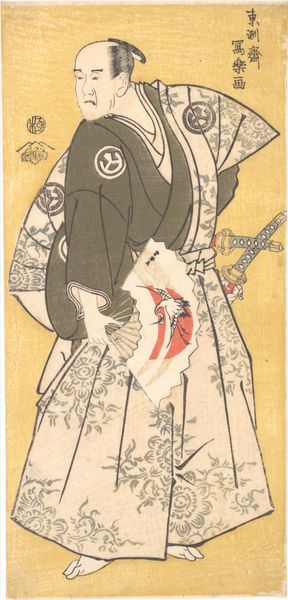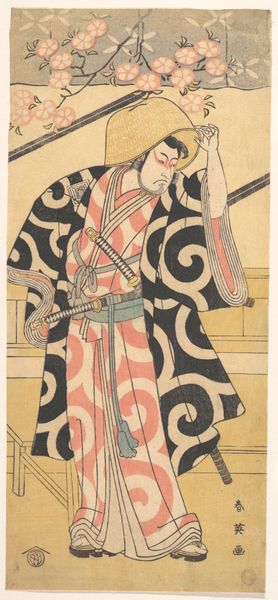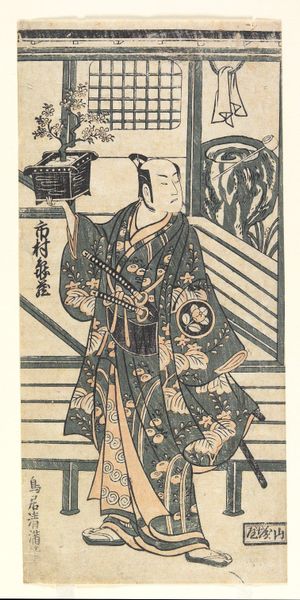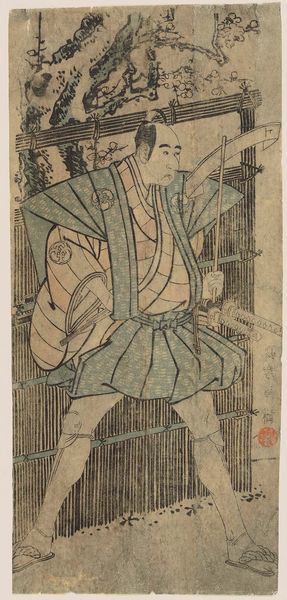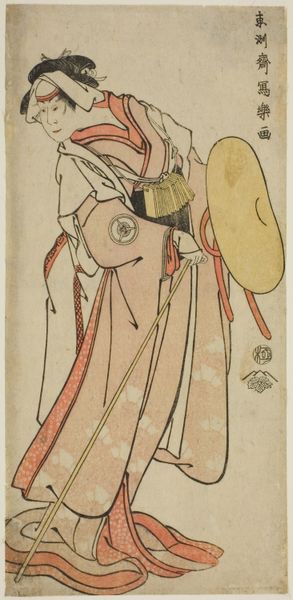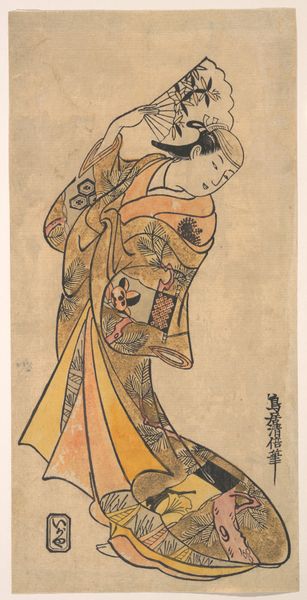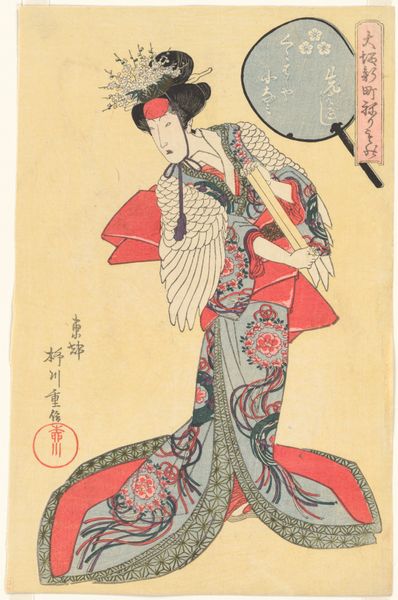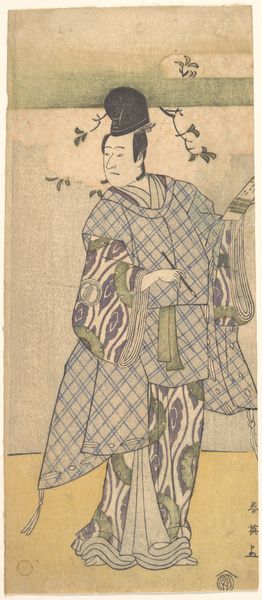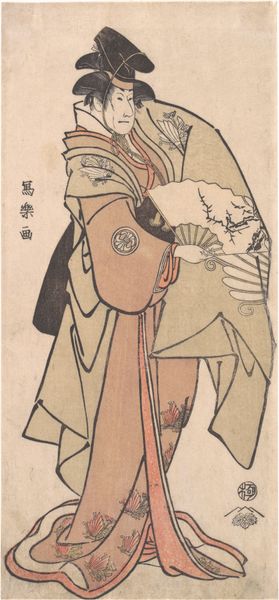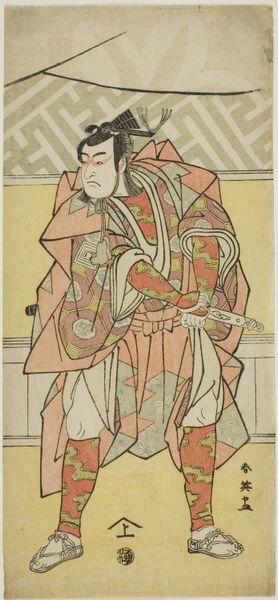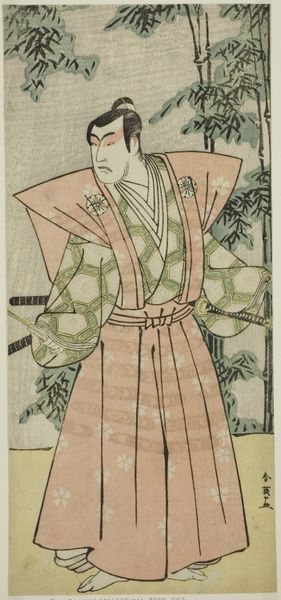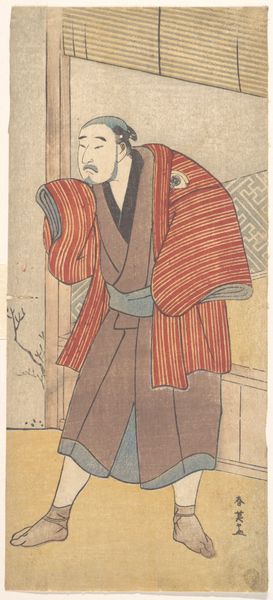
The Actoe Ichikawa Komazo llI as Nitta Yoshisada, Actually Oyamada Taro Takaie (Sandai-me Ichikawa Komazo no Nitta Yoshisada, jitsuwa Oyamada Taro Takaie) Possibly 1794 - 1796
0:00
0:00
print, woodblock-print
#
portrait
# print
#
asian-art
#
ukiyo-e
#
woodblock-print
Dimensions: 31.4 × 14.1 cm
Copyright: Public Domain
Curator: Standing before us is "The Actor Ichikawa Komazo III as Nitta Yoshisada, Actually Oyamada Taro Takaie" a woodblock print made by Tōshūsai Sharaku, likely between 1794 and 1796. Editor: There's a tension in this print, a stillness that almost vibrates. I’m immediately drawn to the stark lines of the figure against that muted background, a figure that projects authority and vulnerability all at once. Curator: Indeed. Sharaku was active for a mere ten months, during which time he produced portraits of Kabuki actors, like this one. These woodblock prints were collaborative, involving the artist, block carvers, printers, and publishers. Each person would bring expertise and the labor would be a coordinated effort, where each process contributed to the overall finished piece. Editor: Considering that brief career and collaborative context really pushes me to think about how the means of production itself informs our reading of the artwork. I am also curious to discuss more the actor depicted here. The double title—Nitta Yoshisada *and* Oyamada Taro Takaie. Curator: Yes! It speaks to the multiple layers of performance inherent in Kabuki, right? Ichikawa Komazo is playing Yoshisada but also embodying Takaie in the play. You're getting a double role which then further enhances the play, the characters and the different identities being explored. What do you read from it? Editor: Absolutely. I see this interplay as a microcosm of societal performance, revealing fluid identities beyond inherent definitions. Who are these roles outside the theater and play—it questions fixed notions of identity in broader culture through class and politics. I can almost sense Sharaku highlighting social constructions. Curator: And that awareness extends to the printmaking itself, the materials employed, the economic and social factors shaping this production process. This image wasn’t just pulled out of thin air – artisans, audiences and their own desires played roles in what ended up being made in this period. Editor: Reflecting on this collaborative ukiyo-e print, its historical period and material creation makes me consider not only the actor portrayed but the narratives and the social dialogue it invites even now. Curator: Yes, the print's existence becomes a snapshot of a larger network of labor, skill, materials, and culture coming together for the fleeting moment of viewing this work.
Comments
No comments
Be the first to comment and join the conversation on the ultimate creative platform.
